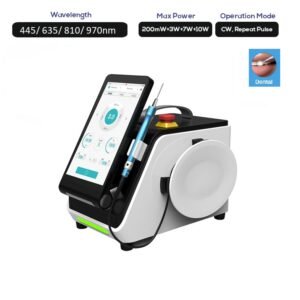Laser use in Dentistry
LASER stands for “light amplification by the stimulated emission of radiation.” The instrument creates light energy in a very narrow and focused beam. This laser light produces a reaction when it hits tissue, allowing it to remove or shape the tissue.
It is used in dentistry to treat a number of different dental conditions. Compared to drills and other non-laser equipment, laser dentistry can provide a more convenient treatment choice for a variety of dental procedures involving hard or soft tissue.
Using Laser in dentistry is meant to treat various conditions such as:
- treating hypersensitivity
- treating tooth decay
- treating gum disease
- whitening teeth
Lasers specifically designed and developed for dental work or oral surgery have been in wide use since the early 1990s. For this reason, Dental Medical Diode Laser SIFLASER-3.0, and SIFLASER-4.0 are highly recommended to our dentist clients. In which, they surves dentistry professionals in various applications.
The dental medical laser SIFLASER-3.0 is designed with a color touch screen, wireless foot control and customizable pre-set protocols .It gratifies dentists and hygienists an effective and affordable laser for their practice.
SIFLASER-3.0 is a clinical tool that offers a wide range of clinical treatment possibilities as they are capable of creating precision cuts in gingiva and other soft tissues while also eliminating bleeding at the site and reducing the healing time for the patient.
It is the most reasonable but advanced laser available for soft tissue dental applications, the special wavelength has high absorption in water and haemoglobin combines precise cutting properties with immediate coagulation.
With 10KHz frequency, it can cut the soft tissue very fast and smoothly with less blood and less pain than ordinary dental surgery devices. Aside from an application in soft tissue surgery, it is also used for other treatments such as decontamination, biostimulation and tooth whitening.
Whereas, the Diode Laser System SIFLASER-4.0 is ideal for coagulation, vaporization and bloodless surgery due to its peak sucking in hemoglobin and its permeability in water.
The blue laser light from the SIFLASER-4.0 interacts better with tissue components like hemoglobin and melanin. Allows for better and softer cutting, even at lower strength, at 450 nm. Thanks to its improved cutting efficiency, it’s ideal for both surgical applications and hemostasis.
In terms of infection prevention, wound healing control, drainage control, and vibration control in hard tissue expulsion, lasers are a valuable addition to dental care.
References: Laser Applications in Dentistry, What is laser dentistry?, A Contemporary Apprise on LASERS and itsApplications in Dentistry,


